In today’s ever-growing urban landscape, finding sustainable solutions for food production is more crucial than ever. Rooftop urban farming, an ingenious approach that capitalizes on unused space, holds the key to cultivating fresh produce in the heart of the city. This revolutionary concept is transforming the way we grow food in urban environments, redefining sustainable agriculture.
Did you know that globally, over 50% of the population lives in urban areas today. By 2045, the world’s urban population will increase by 1.5 times to 6 billion. ? This staggering statistic emphasizes the urgency of transforming our urban landscapes into thriving hubs of sustainable food production. Rooftop urban farming takes center stage, utilizing unused rooftops to address this challenge and nourish the cities we inhabit.

So, join us on this journey as we explore the seven remarkable ideas that redefine sustainable agriculture through rooftop urban farming. From rooftop aquaponics to vertical gardens, these innovative approaches showcase the incredible potential of utilizing rooftops as productive spaces. Get ready to be inspired and discover how rooftop urban farming is reshaping our cities, paving the way for a more sustainable and food-secure future.
Table of Contents
7 Revolutionary Rooftop Urban Farming Ideas for Sustainable Harvest
Idea 1 – Vertical Greenhouses: Reaching New Heights in Farming
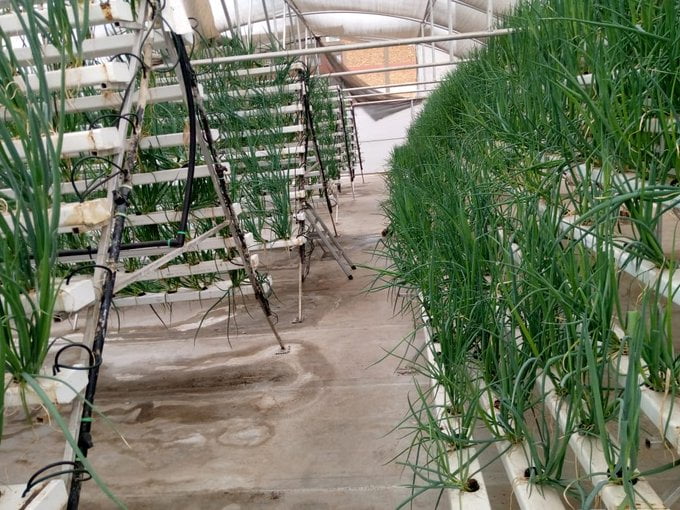
Vertical greenhouses take urban farming to a whole new level by utilizing the vertical space on rooftops. These towering structures use hydroponics and innovative lighting systems to create ideal conditions for plant growth. With this idea, urban farmers can maximize their harvests while conserving space and resources in rooftop urban farming.
Advantages:
- Maximizes space utilization by growing plants vertically.
- Enhances aesthetic appeal and promotes greenery in urban environments.
- Provides insulation and cooling effects for buildings.
Disadvantages:
- Limited crop selection due to space constraints.
- Regular maintenance and monitoring required for proper plant growth.
- Additional structural support may be necessary to accommodate the weight of vertical gardens.
Regulatory Considerations:
Building Codes and Structural Considerations: Before installing a vertical greenhouse, it is essential to ensure that the rooftop structure can support the additional weight. Consult a structural engineer if necessary. Local building codes may have specific requirements for rooftop urban farming structures and their load-bearing capacities.
Safety guidelines:
- Prior to installing a vertical greenhouse, it is of utmost importance to verify that the rooftop structure has the capacity to bear the extra weight.
- When engaging in tasks at elevated heights, it is imperative to employ appropriate safety gear, including harnesses, helmets, and non-slip footwear.
- Adhere to local regulations and safety guidelines concerning equipment handling and rooftop work procedures.
- By adhering to these precautions, you can ensure a secure and compliant installation process.
Potential limitations:
- Vertical greenhouses may have limited space compared to traditional horizontal farms.
- Consider the height and depth restrictions when selecting crops. Some crops with extensive root systems may not be suitable for vertical growing.
- Additionally, vertical greenhouses often rely on artificial lighting, which can increase energy consumption and operational costs.
Precautions:
- Regularly inspect the vertical greenhouse structure to identify and address any signs of wear or damage.
- Monitor temperature and humidity levels closely to prevent plant stress or diseases.
- Implement adequate ventilation systems to maintain airflow and prevent excessive heat buildup.
Environmental Impact and Sustainability:
- Vertical greenhouses optimize space utilization and reduce the need for sprawling farmland.
- By growing crops vertically, they minimize land use and help preserve natural habitats.
- The controlled environment of vertical greenhouses allows for efficient resource utilization, including water and nutrients, reducing waste and promoting sustainability.
- The proximity of these farms to urban areas reduces the carbon emissions associated with transportation
Idea 2 – Aeroponics: Growing Without Soil, Soaring with Success
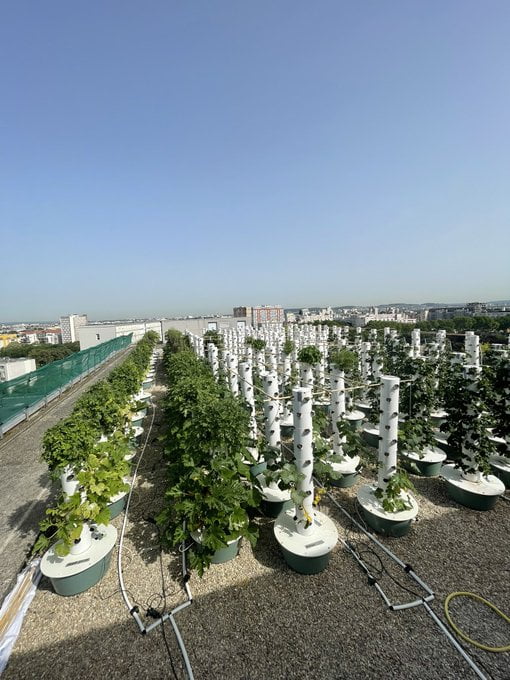
Aeroponics is a revolutionary technology that eliminates the need for soil altogether. By suspending plant roots in a nutrient-rich mist, this method promotes faster growth and higher yields. With its water-saving capabilities and efficient space utilization, aeroponics is rapidly gaining popularity in rooftop urban farming.
Advantages:
- Maximizes water efficiency by using a misting system to deliver nutrients directly to plant roots.
- Faster growth rates and higher yields compared to traditional farming methods.
- Suitable for a wide range of crops and can be implemented in various indoor or outdoor settings.
Disadvantages:
- Requires regular monitoring to ensure proper nutrient delivery and prevent clogging of misting nozzles.
- Reliance on electricity for misting and lighting can increase operational costs for rooftop urban farming.
- Initial setup costs can be higher due to the need for equipment and infrastructure.
Regulatory Consideration:
Water Use Regulations: Some regions may have regulations or permits related to water use and conservation. It is important to understand and comply with local water usage regulations when implementing aeroponic systems for rooftop urban farming.
Safety guidelines:
- When working with aeroponic systems, follow safety guidelines provided by the manufacturer for handling nutrient solutions, pumps, and misting systems.
- Properly maintain and clean the equipment to prevent contamination.
- Follow local regulations for handling and disposing of chemicals.
Potential limitations:
- Aeroponic systems require reliable misting systems to provide a continuous supply of nutrient-rich mist to the plant roots.
- If the misting system malfunctions or clogs, it can lead to poor plant growth or crop loss.
- The initial setup costs of aeroponic systems may be higher compared to traditional soil-based farming methods
Precautions:
- Regularly monitor and maintain nutrient levels and pH balance in the nutrient solution.
- Ensure proper ventilation and airflow to prevent the buildup of excess moisture, which can lead to mold or fungal growth.
- Implement backup misting systems or redundant components to minimize the risk of system failures.
Environmental Impact and Sustainability
- Aeroponic systems eliminate the need for soil, thus preventing soil degradation and reducing water consumption compared to traditional farming methods.
- The water-saving capabilities of aeroponics, along with precise nutrient delivery, contribute to more efficient resource use.
- By reducing water usage and avoiding chemical runoff, aeroponics helps protect water bodies and promotes sustainable water management.
Idea 3 – Green Roofs: Cultivating Nature on City Skylines
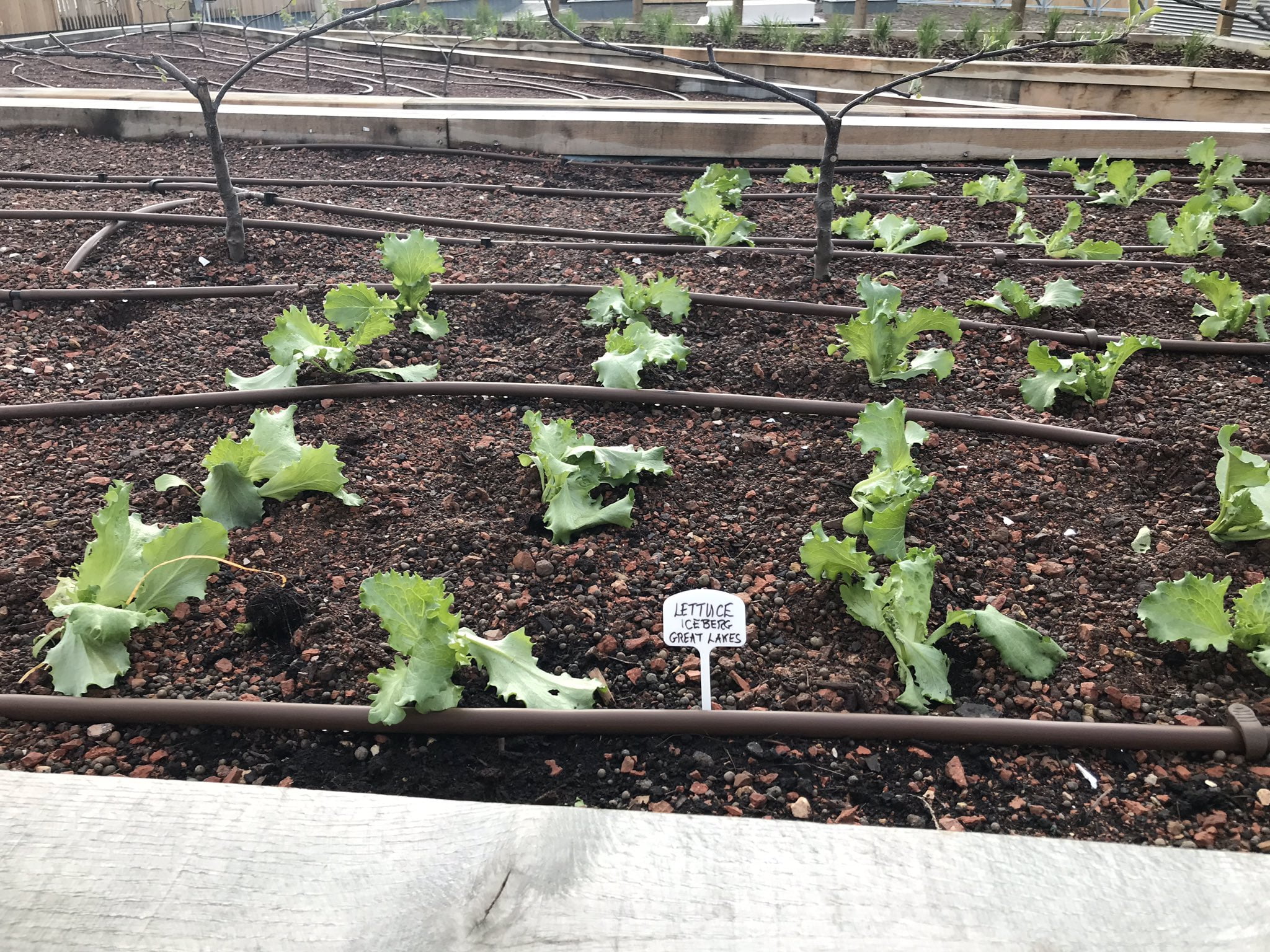
Green roofs serve a dual purpose by not only providing insulation and reducing energy consumption but also creating opportunities for rooftop urban farming. These vegetated rooftops offer an ideal environment for growing plants, mitigating heat island effects, and improving air quality. Incorporating rooftop farming into green roofs enhances sustainability while beautifying the urban landscape.
Advantages:
- Improves building insulation, reducing energy consumption and costs.
- Enhances stormwater management by absorbing rainwater.
- Creates habitats for birds, insects, and other wildlife.
Disadvantages:
- Limited depth of growing medium restricts the variety of crops that can be cultivated.
- Requires proper waterproofing and drainage systems to prevent leaks.
- Initial installation costs can be higher compared to traditional roofing.
Regulatory Consideration:
Zoning and Building Regulations: Green roofs may be subject to zoning regulations and building codes, which vary across different jurisdictions. These regulations may specify requirements for installation, maintenance, and safety measures for green roofs.
Safety guidelines
- When working on green roofs, adhere to safety protocols for working at heights.
- Use appropriate safety equipment such as harnesses, helmets, and non-slip footwear.
- Ensure secure installation of green roof components to prevent dislodgement or accidents.
Potential limitations:
- Green roofs have weight restrictions that limit the choice of plants and growing mediums.
- Ensure that the chosen plants and growing substrates comply with the load-bearing capacity of the roof.
- Regular maintenance is essential to control weed growth and ensure proper drainage, as poor maintenance can lead to waterlogging or plant stress.
Precautions:
- Install a robust waterproofing system to protect the underlying building structure from water damage.
- Conduct regular inspections to identify and repair any leaks or drainage issues promptly.
- Implement a regular maintenance schedule to remove weeds, monitor plant health, and address any structural or drainage concerns.
Environmental Impact and Sustainability:
- Green roofs offer multiple environmental benefits, including reducing the urban heat island effect, mitigating stormwater runoff, and improving air quality.
- The vegetation on green roofs absorbs carbon dioxide, a greenhouse gas responsible for climate change, and releases oxygen, contributing to carbon sequestration.
- Green roofs also provide habitats for birds, insects, and other urban wildlife, promoting biodiversity in cities.
Idea 4 – Modular Farming Systems: Customizable Farms in the Sky
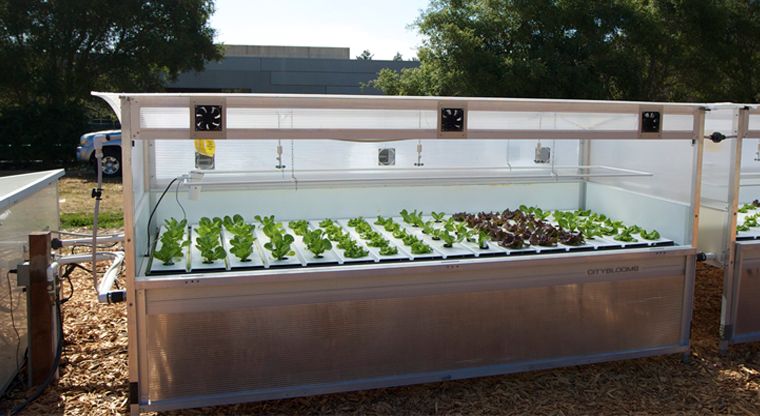
Modular farming systems allow flexibility and scalability in rooftop urban farming. These customizable units feature stacked layers or modules that can be easily adjusted to fit specific needs. From growing vegetables to cultivating herbs, these systems offer a versatile approach to urban farming, ensuring efficient use of available rooftop space.
Advantages:
- Extends the growing season and allows for year-round cultivation.
- Protects crops from pests, diseases, and extreme weather conditions.
- Provides a controlled environment for optimal plant growth.
Disadvantages:
- Requires investment in greenhouse infrastructure and climate control systems.
- Increased energy consumption for heating, cooling, and lighting.
- Limited space for larger-scale production compared to traditional greenhouse facilities.
Regulatory Consideration:
Safety and Stability Requirements: When using modular farming systems, it is important to ensure proper anchoring and stability to withstand weather conditions. Compliance with safety regulations and guidelines for installation and maintenance of modular units may be necessary.
Safety guidelines:
- Follow manufacturer instructions for assembling and installing modular farming units.
- Use caution when stacking or adjusting modules to prevent accidents or instability.
- Ensure proper anchoring of the modules to withstand wind or weather conditions.
Potential limitations:
- Each module in a modular farming system has limited growing space.
- Consider the space requirements of the crops being grown and ensure adequate access for maintenance.
- Additionally, ensure proper irrigation and nutrient distribution to avoid uneven plant growth or nutrient deficiencies.
Precautions:
- Implement a well-designed irrigation and drainage system to prevent waterlogging or nutrient imbalances within the modules.
- Regularly monitor and adjust irrigation levels as needed.
- Secure the modules properly to prevent movement or instability due to strong winds or other environmental factors.
Environmental Impact and Sustainability :
- Modular farming systems allow for flexible and customizable cultivation, optimizing resource utilization and reducing waste in rooftop urban farming.
- By efficiently using available rooftop space, these systems minimize the need for additional land conversion for agriculture.
- Their modularity enables efficient crop rotation and diversification, promoting soil health and reducing the risk of pests and diseases.
Idea 5 – Hydroponic Towers: Reaping the Benefits of Soilless Farming
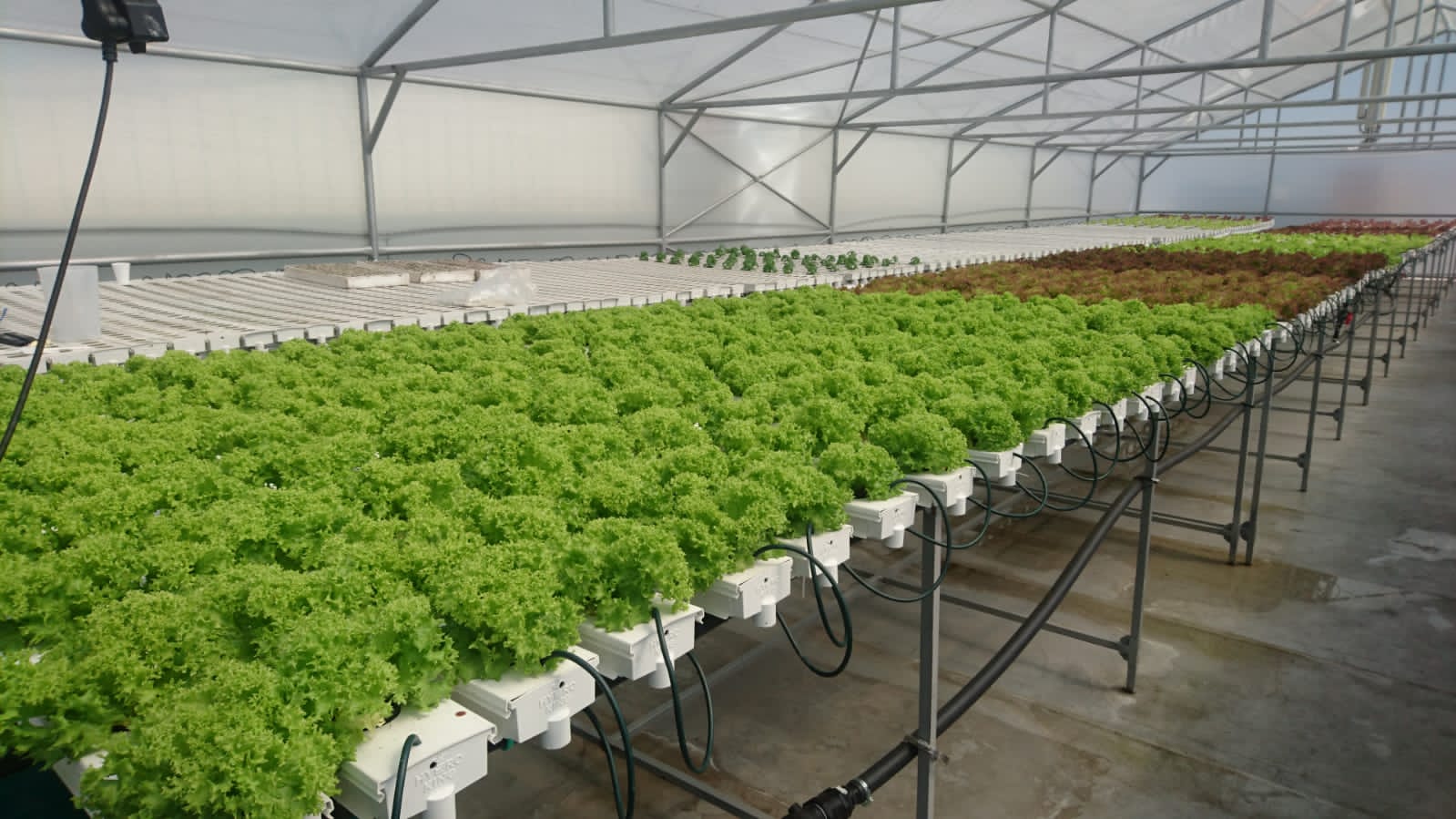
Hydroponic towers are vertical structures that enable the cultivation of crops without soil. These towers use nutrient-enriched water solutions to deliver essential elements directly to plant roots. With their space-saving design and efficient resource utilization, hydroponic towers revolutionize rooftop urban farming, making it possible to grow a variety of crops in a limited area.
Advantages:
- Maximizes water efficiency by providing nutrient-rich water directly to plant roots.
- Allows for precise control over nutrient levels and pH, resulting in faster growth and higher yields.
- Suitable for a wide range of crops and can be implemented in various indoor or outdoor settings.
Disadvantages:
- Requires a well-balanced nutrient solution and regular monitoring to prevent nutrient deficiencies or imbalances
- Reliance on artificial lighting can increase energy consumption.
- Initial setup costs can be higher due to the need for equipment and infrastructure.
Regulatory Consideration:
Electrical and Safety Regulations: Hydroponic towers often require electrical equipment for lighting and pump systems. Compliance with electrical and safety regulations is crucial to ensure safe operation and prevent accidents or hazards.
Safety guidelines:
- Follow safety guidelines for handling nutrient solutions, pumps, and electrical equipment.
- Ensure proper grounding and electrical safety measures for lighting and pump systems.
Potential limitations:
- Hydroponic towers require a well-designed irrigation system to ensure proper nutrient distribution to all plants.
- Inadequate irrigation can lead to uneven plant growth or nutrient deficiencies.
- Furthermore, hydroponic systems may entail higher initial setup costs in comparison to conventional soil-based farming methods.
Precautions:
- Regularly monitor nutrient levels and pH balance in the nutrient solution.
- Adjust nutrient concentrations as needed.
- Implement backup power sources or surge protectors to prevent crop loss during power outages or electrical fluctuations.
Environmental Impact and Sustainability:
- Hydroponic systems for rooftop urban farming eliminate the need for soil and significantly reduce water usage compared to conventional farming.
- These systems recirculate water and nutrients, preventing nutrient runoff and conserving water resources.
- Additionally, the controlled environment of hydroponic towers reduces the need for pesticides, contributing to a healthier ecosystem and promoting biodiversity.
Idea 6 – Community Rooftop Gardens: Nurturing Food and Community Bonds
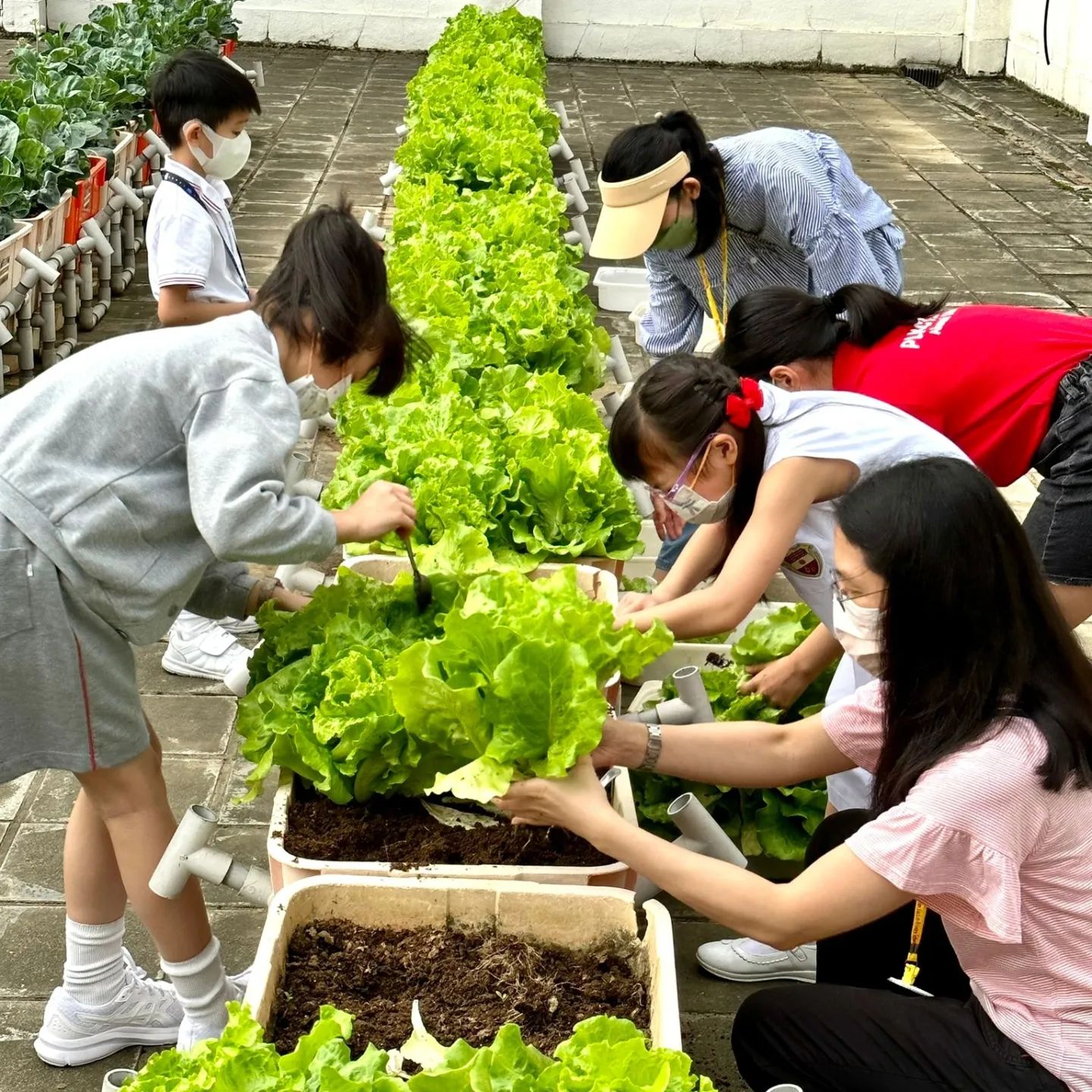
Community rooftop urban farming foster a sense of shared responsibility and bring people together through urban farming. These collaborative spaces provide an opportunity for individuals to connect, learn, and contribute to sustainable food production. By growing crops collectively, these gardens strengthen community bonds and promote local resilience.
Advantages:
- Fosters community engagement and social interaction.
- Provides educational opportunities for people of all ages.
- Promotes local food production and reduces transportation emissions.
Disadvantages:
- Limited individual control over garden maintenance and decision-making.
- Potential conflicts or disagreements among community members.
- Availability of space and resources may be a challenge in densely populated areas.
Regulatory Consideration:
Liability and Insurance: Community rooftop gardens may involve shared spaces and collective participation. It is advisable to consider liability and insurance requirements, such as obtaining appropriate coverage for accidents, injuries, or damages that may occur within the community garden area.
Safety guidelines:
- Educate participants on proper gardening techniques and safe tool usage.
- Implement safety measures for shared spaces, such as installing railings, non-slip surfaces, and adequate lighting.
- Establish clear guidelines for behavior and interaction within the community garden space.
Potential limitations:
- The limited space in community rooftop gardens may restrict the number of participants or the types of crops that can be grown.
- Ensure that there is sufficient space for each participant to access and tend to their assigned garden plot.
- Additionally, coordinating maintenance efforts and ensuring equal participation from all community members can be challenging.
Precautions:
- Clearly communicate garden rules and guidelines to participants, including guidelines for using tools, watering schedules, and shared responsibilities.
- Regularly inspect the garden for potential safety hazards, such as loose or sharp objects, and address them promptly.
- Provide ongoing gardening education and resources to empower community members to garden safely and effectively.
Environmental Impact and Sustainability:
- Community rooftop gardens play a vital role in fostering local biodiversity by providing habitats for pollinators and other urban wildlife.
- These gardens often incorporate native plants, which support local ecosystems and enhance biodiversity.
- Community involvement and education around sustainable gardening practices contribute to environmental awareness and promote sustainable lifestyles.
Idea 7 – Aquaponics: Creating a Balanced Ecosystem for Sustainable Harvests
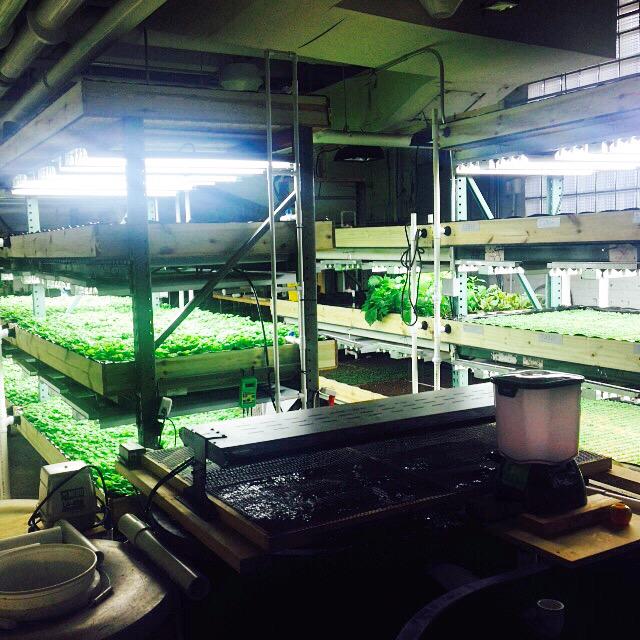
Aquaponics combines fish farming and hydroponics, creating a mutually beneficial relationship between fish and plants. In this closed-loop system, fish waste provides nutrients for the plants, while the plants naturally filter and purify the water for the fish. Aquaponics on rooftops not only produces fresh vegetables and fish but also reduces water consumption and eliminates the need for synthetic fertilizers.
Advantages:
- Efficient use of resources through the symbiotic relationship between fish and plants.
- Year-round production of both fish and vegetables.
- Reduction in water usage compared to traditional farming methods.
Disadvantages:
- Requires additional knowledge and expertise to maintain the aquaponic system.
- Initial setup costs can be higher due to the need for equipment and infrastructure.
- Electricity usage for pumps and lighting may increase operational costs.
Regulatory Consideration:
Fish and Water Management Regulations: Aquaponic systems involve the cultivation of fish and the management of water quality. Compliance with regulations related to fish farming, water management, and wastewater discharge may be necessary.
Safety guidelines:
- Follow safety guidelines for handling fish waste and chemicals used in aquaponic systems.
- Ensure a safe working environment for handling and maintaining the aquaponic components, including pumps, filters, and tanks.
Potential limitations:
- Aquaponic systems require expertise in managing fish health and water quality.
- Maintaining the delicate balance of the ecosystem is crucial for the success of the system.
- The initial setup costs of aquaponic systems may be higher compared to traditional farming methods due to the need for both aquaculture and hydroponic components.
Precautions:
- Regularly monitor water quality parameters such as temperature, pH, ammonia, and nitrate levels to maintain a balanced ecosystem.
- Implement appropriate fish feed and feeding schedules to ensure fish health.
- Follow recommended fish handling techniques to minimize stress and disease transmission.
- . Conduct regular maintenance and cleaning of the aquaponic components to prevent clogs or system failures.
Environmental Impact and Sustainability:
- Aquaponic systems create a balanced ecosystem where fish waste provides nutrients for plants, while plants filter and purify the water for the fish.
- By minimizing water usage, reducing nutrient runoff, and eliminating the need for synthetic fertilizers, aquaponics promotes sustainable water management and reduces the environmental impact of agriculture.
Economic Benefits and Challenges of Rooftop Urban Farming
Rooftop urban farming offers not only environmental and social advantages but also holds economic potential for individuals, communities, and businesses. Understanding the economic benefits and challenges associated with rooftop farming can provide valuable insights for those considering or already involved in this form of agriculture.
Economic Benefits:
- Local Food Production and Sales: Rooftop farms can supply fresh produce directly to local communities, reducing the need for long-distance transportation and associated costs. By selling produce locally, farmers can establish direct relationships with consumers, potentially commanding premium prices for high-quality, locally-grown goods.
- Cost Savings on Transportation: By eliminating or reducing the distance between the point of production and consumption, rooftop urban farming can significantly decrease transportation costs. This can lead to higher profit margins for farmers, as well as more affordable prices for consumers.
- Utilization of Underutilized Space: Rooftops are often underutilized spaces in urban areas. By repurposing these areas for farming, individuals or businesses can make use of otherwise wasted space, potentially generating revenue streams from otherwise unused assets.
- Diversification of Income: For entrepreneurs or businesses, rooftop urban farming can provide an additional or alternative revenue stream. By combining agricultural production with other services such as rooftop events, workshops, or agritourism, rooftop farms can generate income from multiple sources.
- Job Creation and Local Economy: The establishment of rooftop farms can create employment opportunities, particularly in densely populated urban areas. Hiring local residents for farming, maintenance, marketing, or distribution activities can contribute to the growth and development of the local economy.
Economic Challenges:
- Initial Investment Costs: Setting up rooftop urban farming requires initial investments in infrastructure, such as structural modifications, irrigation systems, and farming equipment. These upfront costs can be a barrier, particularly for individuals or communities with limited financial resources.
- Operational and Maintenance Costs: Rooftop farms require ongoing maintenance, including irrigation, pest control, and crop management. Additionally, the cost of utilities, such as electricity for artificial lighting or climate control, can contribute to the operational expenses.
- Limited Scale and Production: Due to space constraints, rooftop farms may have limitations in terms of the scale of production and the variety of crops that can be grown. Maximizing productivity within limited space while meeting market demand can be challenging and require careful planning.
- Regulatory and Legal Considerations: Rooftop urban farming may be subject to local regulations, permits, and zoning restrictions. Compliance with these requirements can involve additional costs, such as obtaining permits or ensuring adherence to safety standards.
- Market Demand and Competition: Assessing the market demand for rooftop farm produce and finding a niche within the local food market is crucial for economic success. Competition from other agricultural producers, both conventional and urban, can impact pricing and market penetration.
By understanding and addressing these economic benefits and challenges, people who practice rooftop urban farming can make informed decisions, develop sustainable business models, and maximize the potential profit of their urban farming endeavors.
Conclusion:
The 7 Revolutionary Rooftop Urban Farming Ideas for Sustainable Harvest presented in this article exemplify the creative and forward-thinking approach to agriculture in urban settings. Vertical greenhouses, aeroponics, green roofs, modular farming systems, hydroponic towers, community rooftop gardens, and aquaponics are transforming rooftops into thriving hubs of sustainable food production. By implementing these innovative ideas, we can cultivate fresh produce, promote community resilience, and build a greener, more sustainable future for our cities. Embrace these ideas and be part of the rooftop urban farming revolution today!
